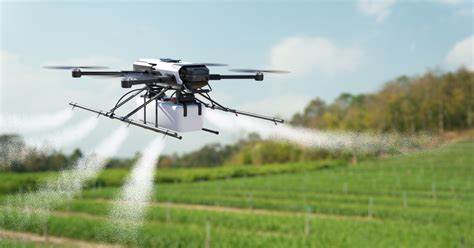A flurry of court decisions and new federal policies this year changed which pesticides farmers can use and how.
A number of commonly used crop protection products were pulled from the market this year, including dicamba, a controversial herbicide that is vulnerable to drifting and destroying plants outside of farm boundaries. The U.S. Environmental Protection Agency also announced a rare emergency action to ban DCPA or Dachtal, which is used on onions and broccoli.
Outside of restrictions on individual pesticides, the EPA also took steps to reassess how it approves crop protection products in the future. The agency finalized a plan to safeguard endangered species from pesticides and proposed reviving an Obama-era rule to protect farmworkers from these chemicals.
Farmers may experience the impact of these new regulations beyond 2024. The EPA is expected to use new strategies to reapprove pesticides and likely impose additional restrictions on how some products can be used. However, under the new Trump administration, some decisions could be overturned or reversed.
Here’s a look back on some of the biggest pesticide regulation stories of the year.
As of May 2025, pest regulation in the United States encompasses a range of initiatives led by federal agencies, including the USDA and EPA, to safeguard agriculture, public health, and the environment. Here’s an overview of the latest developments:
🐛 USDA’s Efforts in Pest Management
1. Plant Protection Act (PPA) Section 7721 Funding
The USDA’s Animal and Plant Health Inspection Service (APHIS) has allocated over $70 million for 357 projects under the Plant Pest and Disease Management and Disaster Prevention Program (PPDMDPP). These projects focus on:APHIS+2APHIS+2APHIS+2
-
Enhancing pest detection and surveillance
-
Strengthening pest identification technologies
-
Safeguarding nursery production systems
-
Conducting targeted outreach and education
-
Improving mitigation and rapid response capabilitiesWIRED+2APHIS+2APHIS+2APHIS
Additionally, up to $4 million is set aside to support Tribes, Tribal organizations, and minority-affiliated institutions. APHIS+3APHIS+3APHIS+3
2. Response to New World Screwworm Outbreak
The USDA is collaborating with Mexico to combat an outbreak of the New World screwworm, a parasitic fly threatening livestock. Measures include:Reuters+4Midland Reporter-Telegram+4Food & Wine+4
-
Deployment of sterile insect techniques
-
Enhanced inspection and treatment protocols at ports
-
Emergency funding totaling $165 million to support eradication effortsReuters+2New York Post+2Midland Reporter-Telegram+2Reuters+1Reuters+1Reuters
These actions aim to prevent the spread of the screwworm into the U.S. and ensure the safety of livestock imports. New York Post+4Food & Wine+4Reuters+4
🧪 EPA’s Regulatory Updates
1. Insecticide Strategy for Endangered Species
The EPA has released a final Insecticide Strategy to protect over 900 federally endangered and threatened species. The strategy includes:US EPA
-
Implementing mitigation measures during insecticide registration and reevaluation
-
Balancing species protection with the needs of pesticide usersUS EPA+1US EPA+1
This approach aims to ensure that insecticide use does not jeopardize vulnerable species while maintaining agricultural productivity.
2. Adjustments to Pesticide Regulations
In response to industry feedback, the EPA has:The New Lede
-
Reduced buffer zones intended to protect endangered species from pesticide exposure
-
Streamlined pesticide labeling requirementsThe New Lede
These changes have been welcomed by farming groups seeking to ease regulatory burdens. The New Lede
🧬 Integrated Pest Management (IPM)
The USDA promotes Integrated Pest Management (IPM) as a sustainable approach combining biological, cultural, physical, and chemical tools to manage pests effectively. Federal agencies are mandated to incorporate IPM principles into their pest management activities, regulations, and procurement processes. USDA




